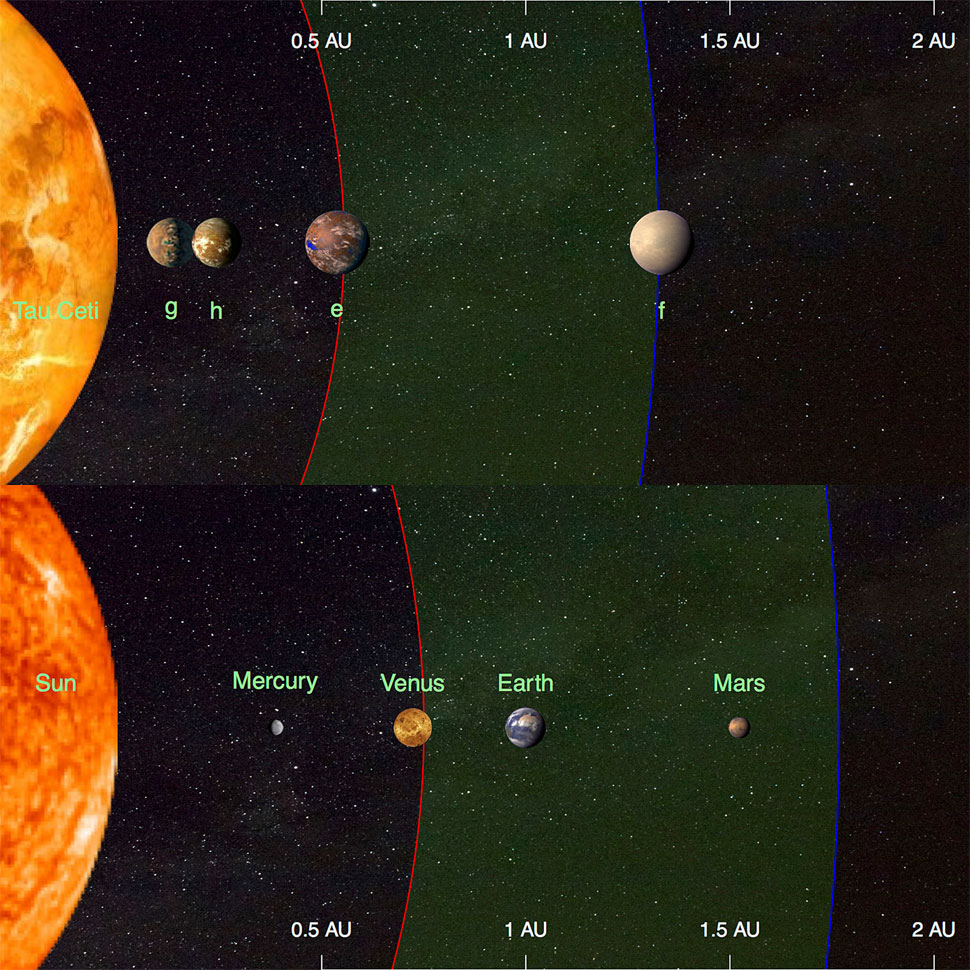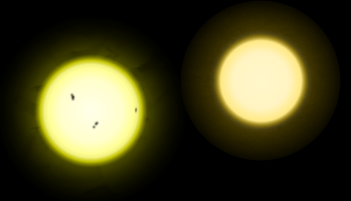
10th August 2017 Four Earth-sized planets detected orbiting the nearest Sun-like star An international team of astronomers has found that four Earth-sized planets orbit the nearest Sun-like star, Tau Ceti, which lies 12 light years away and is visible to the naked eye. These planets have masses as low as 1.7 Earth mass, making them among the smallest planets ever to be detected around G-type stars near our Solar System. Two are super-Earths located in the habitable zone, meaning they could support liquid surface water. The planets were detected by observing tiny wobbles in the movement of Tau Ceti. This required techniques sensitive enough to detect variations in the movement of the star as small as 30 centimetres (12 inches) per second. "We are now finally crossing a threshold where, through very sophisticated modelling of large combined data sets, we can disentangle the noise due to stellar surface activity from very tiny signals generated by the gravitational tugs of Earth-sized orbiting planets," said the study co-author, Steven Vogt, Professor of Astronomy and Astrophysics at the University of California, Santa Cruz.
According to lead author Fabo Feng at the University of Hertfordshire, UK, researchers are now tantalisingly close to the 10-centimetre-per-second limit required for detecting Earth analogues: "Our detection of such weak wobbles is a milestone in the search for Earth analogues and the understanding of the Earth's habitability through comparison with these analogues," said Feng. "We have introduced new methods to remove the noise in the data in order to reveal the weak planetary signals." As shown in the diagram above, the outer two planets around Tau Ceti are likely to be candidate habitable worlds – although a massive debris disc around the star probably reduces their habitability, due to intensive bombardment by asteroids and comets. The same team also investigated Tau Ceti in 2013, when co-author Mikko Tuomi from the University of Hertfordshire led an effort in developing data analysis techniques and using the star as a benchmark case: "We came up with an ingenious way of telling the difference between signals caused by planets and those caused by a star's activity," he explains. "We realised that we could see how a star's activity differed at different wavelengths and use that information to separate this activity from signals of planets." The team painstakingly improved the sensitivity of their method and were able to rule out two signals they had identified in 2013 as planets: "But no matter how we look at the star, there seem to be at least four rocky planets orbiting it," Tuomi says. "We are slowly learning to tell the difference between wobbles caused by planets, and those caused by stellar active surface. This enabled us to essentially verify the existence of the two outer, potentially habitable planets in the system." Sun-like stars are thought to be the best targets in the search for habitable Earth-like planets, due to their similarity to our Sun. Unlike more common smaller stars, such as the red dwarf stars Proxima Centauri and Trappist-1, they are not so faint that planets would be tidally locked, showing the same side to the star at all times. Tau Ceti is very similar to the Sun in its size and brightness, and both stars host multi-planet systems. A paper on these new findings was accepted for publication in the peer-reviewed Astronomical Journal and is available online. The data was obtained by using the HARPS spectrograph (European Southern Observatory, Chile) and Keck-HIRES (W. M. Keck Observatory, Mauna Kea, Hawaii).
---
Comments »
|








